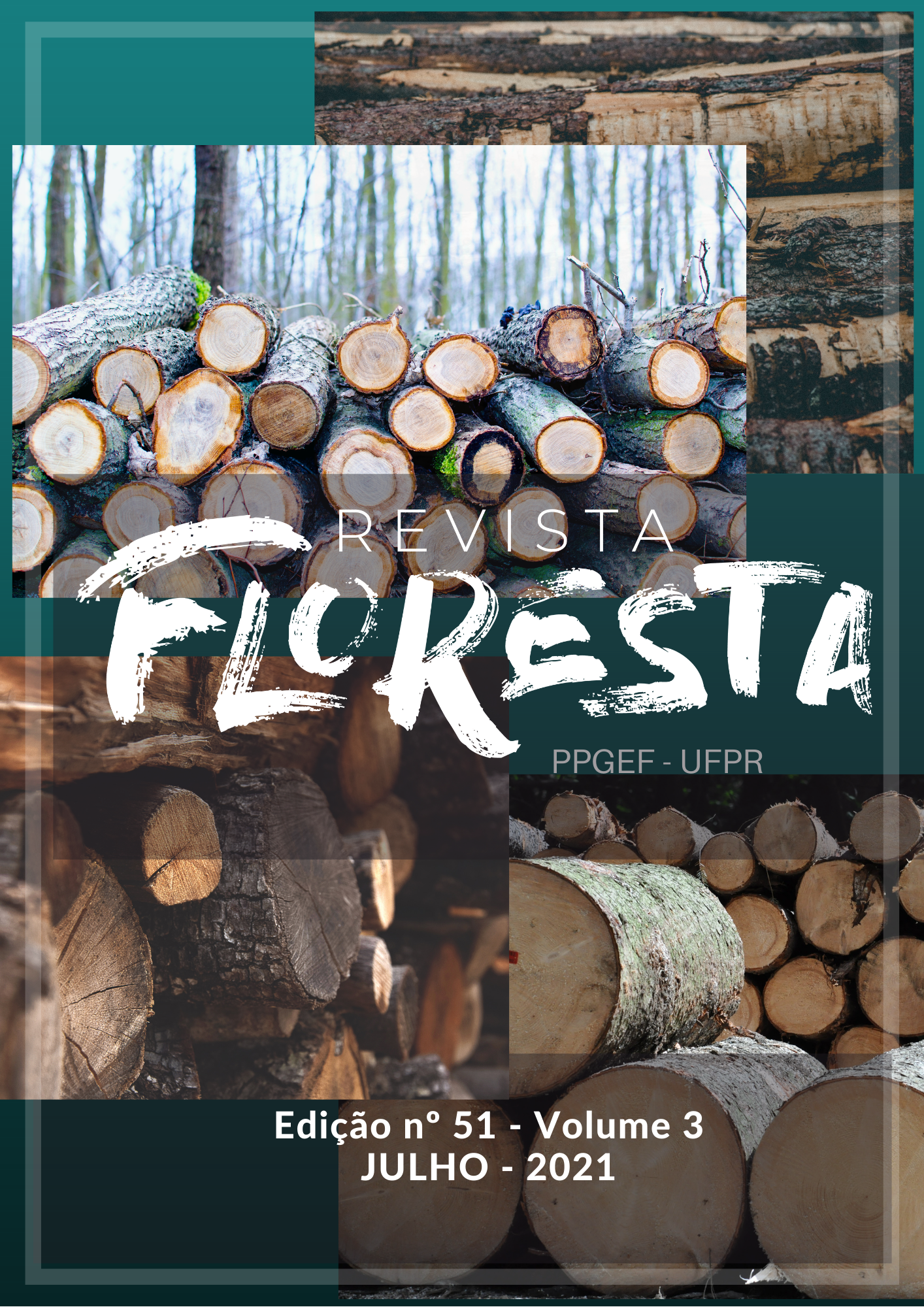DENDROCHRONOLOGY OF TWO FOREST SPECIES IN THE URBAN AREA OF THE CITY OF PUERTO MALDONADO, PERU
DOI:
https://doi.org/10.5380/rf.v51i3.72410Palavras-chave:
growth rings, radial growth, Cordia alliodora, Cedrela fissilis, Madre de Dios.Resumo
We evaluated by dendrochronological methods the growth rings of these two species and their relationship with the climate. Wood samples were collected with the Pressler's probe. Measurements and analysis of the growth rings of the two species were performed using standard dendrochronology techniques. The master series (chronologies) were correlated with the climatic indices (precipitation and temperature), obtained from the NOAA meteorological database. The growth rings of the two species growing in the urban area are different and annual, delimited by the marginal parenchyma and semicircular porosity, in addition, C. alliodora presented fibrous areas. Both species presented an intercorrelation between the trees above 0.50. The maximum ages were 13 years for C. allidora and 32 years for C. fissilis. Likewise, the low correlation between the climate and the chronologies of the two species may suggest the influence of other ecological or anthropic factors that are intervening in the growth of these species. Finally, the potential of the two forest species for dendrochronological studies in the urban area of Puerto Maldonado Peru is demonstrated.
Downloads
Publicado
Como Citar
Edição
Seção
Licença
Direitos Autorais para artigos publicados nesta revista são do autor, com direitos de primeira publicação para a revista. Em virtude da aparecerem nesta revista de acesso público, os artigos são de uso gratuito, com atribuições próprias, em aplicações educacionais e não-comerciais.A revista, seguindo a recomendações do movimento Acesso Aberto, proporciona acesso publico a todo o seu conteudo, seguindo o principio de que tornar gratuito o acesso a pesquisas gera um maior intrcambio global de conhecimento.
Conteúdos do periódico licenciados sob uma CC BY-NC-SA 4.0



